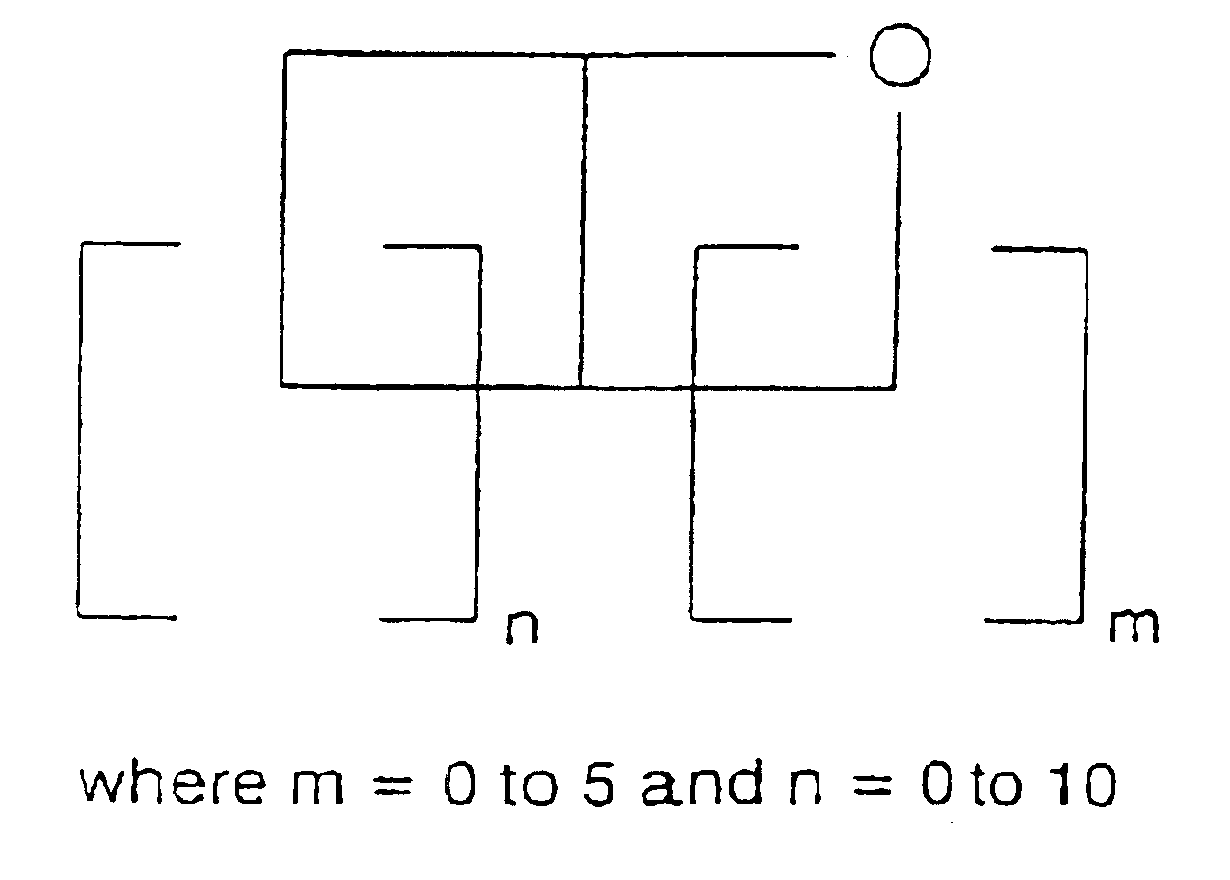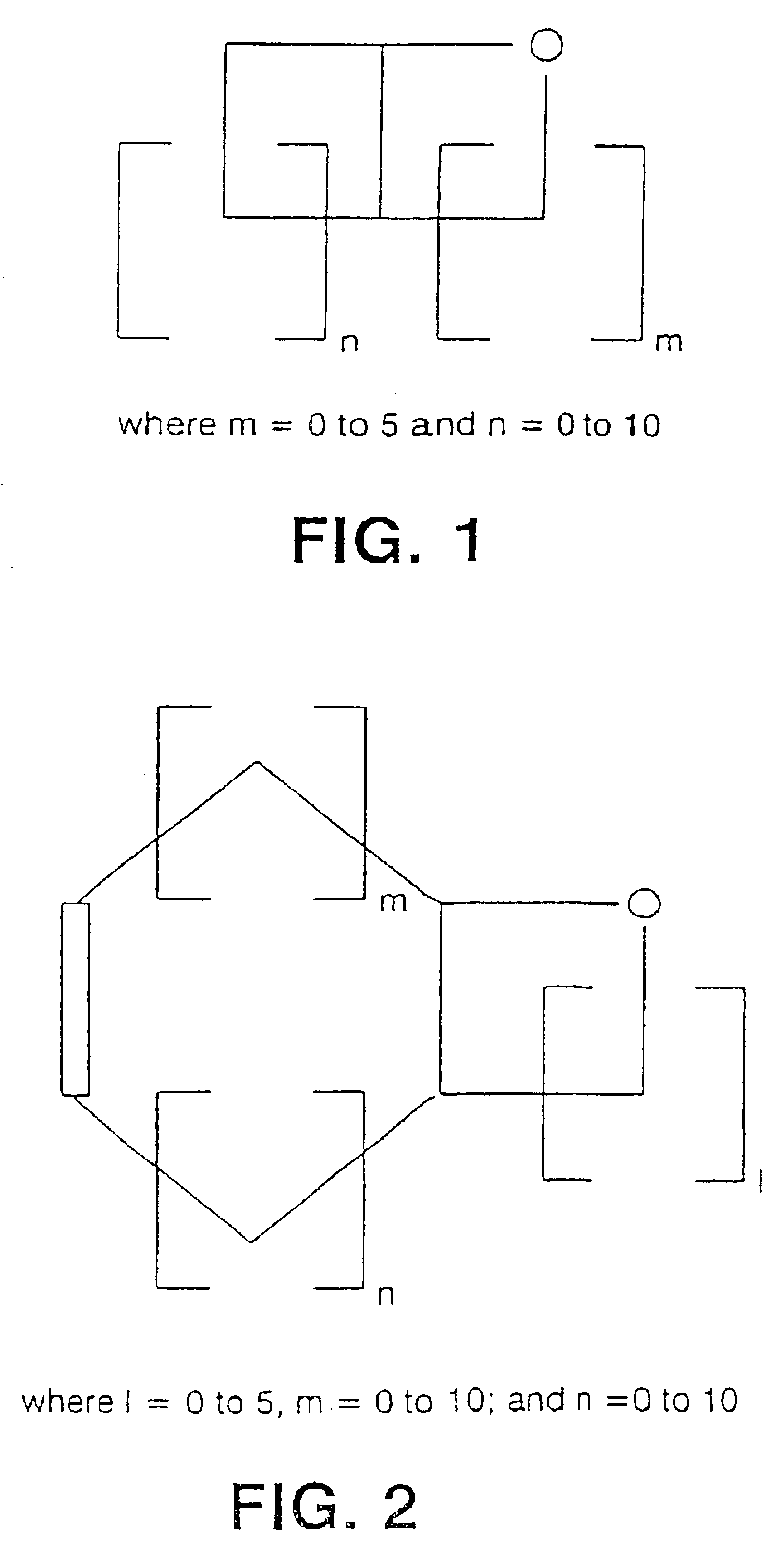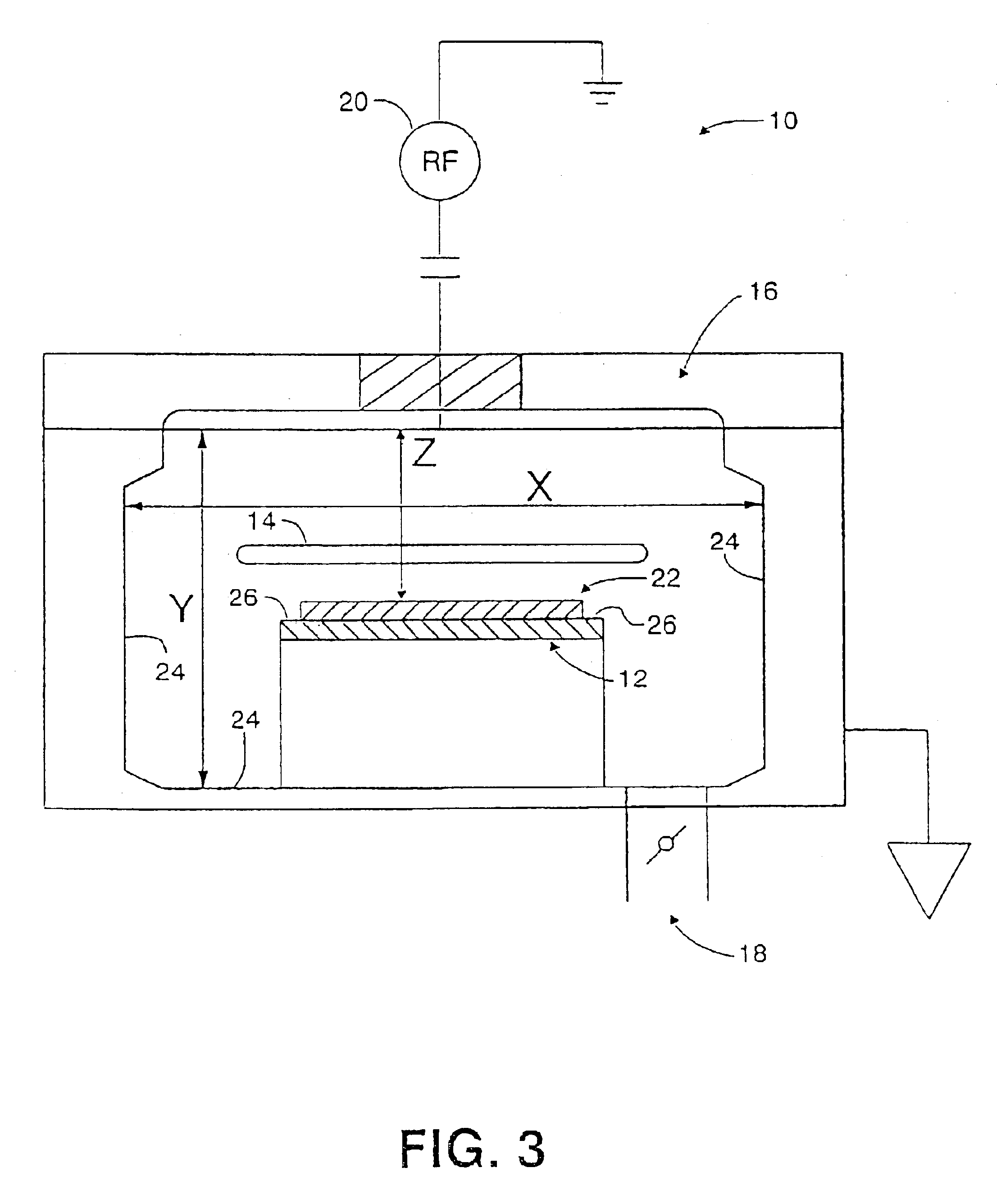Method for fabricating an ultralow dielectric constant material
a dielectric constant and ultra-low technology, applied in the direction of chemical vapor deposition coating, semiconductor/solid-state device details, coatings, etc., can solve the problems of increasing signal delays in ulsi electronic devices, dielectric materials are not thermally stable, and dielectrics are rendered useless during integration
- Summary
- Abstract
- Description
- Claims
- Application Information
AI Technical Summary
Benefits of technology
Problems solved by technology
Method used
Image
Examples
example 1
In this example, according to FIG. 3, a wafer is first prepared by introducing the wafer into reactor 10 through a slit valve 14 and pre-etching the wafer by argon gas. In this wafer preparation process, the wafer temperature is set at about 180.degree. C. and the argon flow rate is set at about 25 sccm, to achieve a pressure of about 100 mTorr. A RF power is then turned on to about 125 W for about 60 seconds. The RF power and the argon gas flow are then turned off.
The TMCTS precursor is carried into the reactor reactor using CO.sub.2 as a carrier gas; CO.sub.2 is at a pressure of about 5 psig at the inlet to the TMCTS container. The ultralow-k film according to the present invention can be deposited by first establishing gas flows of TMCTS+CO.sub.2 and CPO to desired flow rates and pressure, i.e., at about 20 sccm of TMCTS+CO.sub.2 and about 10 sccm of CPO and about 100 mTorr. A RF power is then turned on at about 15 W for a time period of about 50 minutes. The RF power and the gas...
example 2
In this example, a wafer is prepared as described in Example 1, but the wafer temperature is set at about 300.degree. C. The TMCTS precursor is then carried into the reactor using CO.sub.2 as a carrier gas; CO.sub.2 is at a pressure of about 5 psig at the inlet to the TMCTS container. The ultralow-k film according to the present invention can be deposited by first establishing gas flows of TMCTS+CO.sub.2 and CPO to desired flow rates and pressure, i.e., at about 150 sccm of TMCTS+CO.sub.2 and about 75 sccm of CPO and about 2000 mTorr. A RF power is then turned on at about 150 W for a time period of about 10 minutes. The RF power and the gas flow are then turned off. The wafer is then removed from the reaction reactor 10 and annealed as described in Example 1.
In the foregoing examples, the plasma was operated in a continuous mode. In Example 3 herein below, the plasma is operated in a pulsed mode.
example 3
In this example, the deposition is performed under conditions similar to Example 1, but the plasma is operated in a pulsed mode, i.e., with a duty cycle of about 50% and a plasma-on time of about 50 msec to about 100 msec. After removal of the wafer from reactor 10, the wafer with the deposited film is annealed as described in Example 1.
PUM
| Property | Measurement | Unit |
|---|---|---|
| temperature | aaaaa | aaaaa |
| dielectric constant | aaaaa | aaaaa |
| dielectric constant | aaaaa | aaaaa |
Abstract
Description
Claims
Application Information
 Login to View More
Login to View More - R&D
- Intellectual Property
- Life Sciences
- Materials
- Tech Scout
- Unparalleled Data Quality
- Higher Quality Content
- 60% Fewer Hallucinations
Browse by: Latest US Patents, China's latest patents, Technical Efficacy Thesaurus, Application Domain, Technology Topic, Popular Technical Reports.
© 2025 PatSnap. All rights reserved.Legal|Privacy policy|Modern Slavery Act Transparency Statement|Sitemap|About US| Contact US: help@patsnap.com



